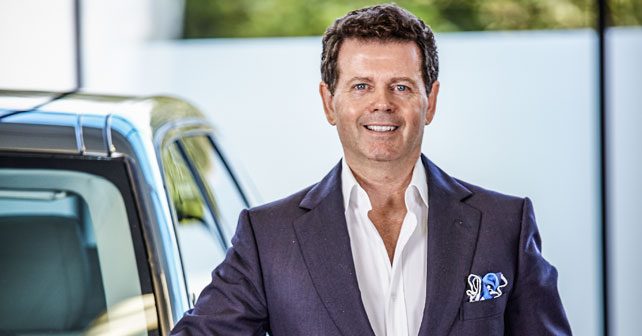
We speak to Land Rover’s design chief, Gerry McGovern, about the Defender replacement, the future design direction of Land Rover, and the ever-enlarging touchscreens in today’s cars.
The original Defender has had a long run, but now you’re trying to replace what is the most iconic Land Rover ever. How is that design process coming along?
The first thing to remember is that you’re not going to replace an icon with an icon, because you can’t simply arrive at an iconic status. Having said that, I think it’s a great challenge, an honour, and a great opportunity to get remembered in history for it. You certainly get remembered if you mess it up! There’s great expectation, and, of course, there’s been great expectation for a new one for a long time now – and that’s been exacerbated by the fact that we’ve now stopped production of the old car. I think the trick is to not become preoccupied with what the Defender was, because the new Defender has to be relevant to a whole new generation, it has to be relevant to an environment that is totally different to when the original was created over sixty years ago. So, I suppose one of the pointers to keep in mind would be to envision if the Defender had evolved over time – say, like a Porsche 911, with a new model every 10 years – what would it be like today? And that’s the way you have to envision it. What would it be like? How would it have evolved? So, it’s a case of recognizing that unique heritage, yet not being harnessed by it. It’s about looking forward, about doing something modern, contemporary and relevant. But, I think it needs to capture the essence of what the car represents in terms of its values – it needs to be incredibly durable, it also needs to be very premium as well. So, I’m very excited about the challenge.
How has customer feedback been to the new design language you’ve taken with the Discovery Sport?
My view is that you can listen to lots of views, do lots of surveys and customer clinics, but the reality is that great design isn’t great design unless it sells. So, the real measure is sales – and we’ve sold over 70,000 units of the Discovery Sport in under a year. So demand is very high, and I think that’s a good reflection on the design of the car. And I think once the rest of the Discovery line-up gets launched, and the new Defender also comes in, our whole design language for the brand will start making even more sense. But, as a specific vehicle, the reaction to the Discovery Sport has been very good. I think the charm of it is that it’s quite a compact vehicle, but it’s got an incredible amount of room inside – far more than the Freelander had.
We’re now in an era where touchscreens are somewhat mandatory in premium vehicles. What’s your view on the growing fashion of ever-larger touchscreens, and is this the future of interior design?
One of the things that I keep counselling the teams internally is the fact that, in our desire to get the latest and greatest in terms of touchscreen technology and all its functionality – which, incidentally, most people don’t even use much of – I remind them that you are driving a machine that, in the wrong hands, can be a potential danger to themselves and others around them. So, I think we’ll get to a point where screens will get bigger for a while – and I honestly think they’ve become a fashion statement, like it was a statement some time ago to acquire the biggest screen television one could afford for their house. I think what’ll eventually happen is that screens will get smaller, and we’re looking at making connectivity more intuitive and less labour intensive – so it doesn’t distract the driver.

















Write your Comment